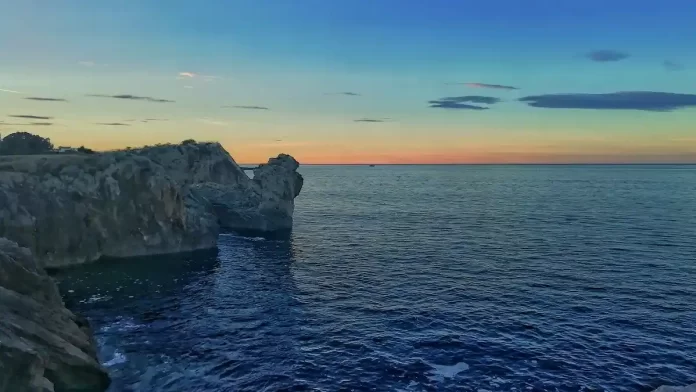Tropical cyclones, known by different names such as hurricanes, typhoons, or cyclones, are some of the most powerful and destructive natural phenomena on Earth. These storms originate in tropical and subtropical regions, where the conditions are favorable for their development.
However, there is a striking absence of tropical cyclones in the South Atlantic and South Eastern Pacific regions within the tropical latitudes.
This geographical peculiarity has intrigued meteorologists and scientists for many years.
In this article, we will explore the reasons behind the conspicuous absence of tropical cyclones in these areas and the unique factors that set them apart from the more cyclone-prone regions of the world.
Ocean Temperature not Warm
One of the primary factors driving the formation and intensification of tropical cyclones is warm sea surface temperatures. Ocean water acts as the energy source for these storms.
Warm waters allow for the evaporation of moisture into the atmosphere, which subsequently provides the necessary heat and moisture for cyclone development.
The South Atlantic and South Eastern Pacific, however, have cooler ocean temperatures compared to the Atlantic, Indian, and western North Pacific Ocean regions.
The waters of the South Atlantic and South Eastern Pacific are cooler due to various factors, including the upwelling of cold water from the depths of the ocean, the proximity to the cold Humboldt Current in the South Eastern Pacific, and the lack of a significant warm-water pool like the Gulf Stream in the Atlantic.
These cooler ocean temperatures do not provide the necessary heat energy to fuel the intense convective processes that drive tropical cyclone formation.
Lack of Pre-existing Disturbances
Tropical cyclones typically form from pre-existing disturbances, such as tropical waves, easterly waves, or monsoon troughs.
These disturbances provide the initial structure and rotation necessary for cyclone development.
In regions like the Atlantic and the western North Pacific, these disturbances are common, providing a fertile breeding ground for cyclones. However, in the South Atlantic and South Eastern Pacific, such disturbances are infrequent.
The South Atlantic, in particular, has a scarcity of these pre-existing disturbances, which is a significant hindrance to cyclone formation.
This region is less conducive to the development of the spin needed to initiate a cyclone. In the South Eastern Pacific, while some disturbances do occur, they are not as frequent or as conducive to cyclone formation as those in other cyclone-prone regions.
Wind Shear
Another critical factor influencing the development and intensification of tropical cyclones is wind shear.
Wind shear refers to the change in wind speed and direction with altitude. Low wind shear is essential for tropical cyclone development, as it allows for the organization and strengthening of the storm.
In the South Atlantic and South Eastern Pacific, higher wind shear is more common, especially during the cyclone season.
This increased wind shear disrupts the vertical alignment of the storm and can prevent cyclone development or weaken existing storms.
In contrast, regions like the Atlantic and the western North Pacific experience lower wind shear, which is favorable for cyclone formation and intensification.
Dry Air Intrusions
Tropical cyclones thrive on warm, moist air. Dry air intrusions, where dry air infiltrates the storm system, can inhibit cyclone development and weaken existing cyclones.
The South Atlantic and South Eastern Pacific regions are more susceptible to dry air intrusions due to their proximity to drier continental air masses and high-pressure systems.
These dry air intrusions can disrupt the convective processes within a tropical cyclone, preventing it from organizing and intensifying.
In contrast, regions like the Atlantic and the western North Pacific are less prone to dry air intrusions, which allows tropical cyclones to develop and strengthen more readily.
Presence of Geographic Barriers
The geographical features of the South Atlantic and South Eastern Pacific regions also play a role in the absence of tropical cyclones.
In the South Atlantic, the presence of landmasses along the equator, such as South America and Africa, disrupts the continuity of warm ocean waters necessary for cyclone formation.
Additionally, the lack of the Coriolis effect near the equator inhibits the formation of the rotation needed for tropical cyclones.
In the South Eastern Pacific, the Andes mountain range acts as a barrier, preventing the eastward progression of tropical cyclones. This geographic feature further limits the development of cyclones in the region.
Climatological Rarity
The rarity of tropical cyclones in the South Atlantic and South Eastern Pacific regions creates a feedback loop. Since cyclones are infrequent in these areas, there is limited climatological data and knowledge about cyclone behavior and patterns.
Meteorologists and scientists have less historical data to analyze, hindering their ability to predict and understand cyclone behavior in these regions.
As a result, the lack of cyclones becomes a self-perpetuating cycle, where the absence of data and information makes it challenging to predict or understand potential cyclone occurrences.
In contrast, regions that experience frequent cyclones have a wealth of data to draw from, which aids in prediction and preparedness efforts.
Conclusion
The conspicuous absence of tropical cyclones in the South Atlantic and South Eastern Pacific regions within tropical latitudes can be attributed to a combination of factors, including cooler ocean temperatures, a lack of pre-existing disturbances, higher wind shear, dry air intrusions, geographic barriers, and the rarity of cyclones in these areas.
These factors create a unique meteorological environment that distinguishes these regions from the more cyclone-prone areas of the world.
While this absence may seem like a fortunate quirk of nature, it also presents challenges in terms of preparedness and prediction.
The limited historical data and understanding of cyclone behavior in these regions make it crucial to continue studying and monitoring these areas to ensure that communities are prepared for any potential cyclone events that may arise in the future.
